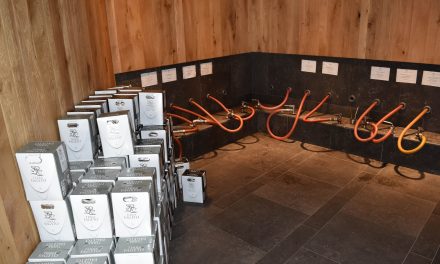Last night I visited an old friend, the bottle you see above, Francois Berthau’s Chambolle-Musigny. It was served to me by a new friend who invited us to her house for dinner.
The wine, a 2007 vintage, still had the same qualities I remember as the 1980’s and 1990’s vintages I tasted ages ago, elegant, silky, as fruit-forward as Burgundy can get, well balanced. It also had a clean nose, those earthy, barnyard, fertilizer noses of old having nowadays been cleansed. It tasted good alone and with salmon. The experience made me sorry that I no longer buy or drink Burgundy.
Burgundy gave the world pinot noir and, since time immemorial, was the only go-to place for this varietal. Finally supplanted by New World upstarts such as California and New Zealand that present heartier, more consistent pinot noir at affordable prices, Burgundy in America is a now a niche wine for a small group of wealthy aficionados.
The problem with the decline of interest in Burgundy can be traced back to Napoleon Bonaparte, whose legal code, among other reforms, changed French inheritance laws. Before Napoleon feudal laws dictated that estates be inherited by the first borne son. Subsequent sons went into the military and clergy; women could not inherit. While unfair to individual children, these laws allowed preservation of large estates. When the Napoleonic Code changed these rules to equally partitioned inheritance among all sons, the estates got chopped up through several generations into smaller and smaller ones, resulting in a proliferation of cottage-industry winemakers each tending to small plots of land.
It all ended in what we have today, a mish-mash of quality due to extreme heterogeneity and high prices due to the lack of scales of economy. Furthermore brand identity became very difficult for customers to follow since it was tied not to the terroir or varietal but to the individual winemaker. With many hundred producers, many with the same last names (various brothers who shared their inheritance) Burgundy became a region where interested drinkers could only latch onto a few producers they liked, whom they could hopefully afford.
For me this was Berthau in the 1990’s. His vineyards from the village of Chambolle produced what I considered more “domestic-like”, fruit-forward pinot (even then I was already enchanted by California) but still with that all elusive elegant silkiness of a proper Burgundy.
Then the prices went up. Current releases of 2012 Berthau Chambolle are going for around $80, 1er Cru for $200. Why would I pay that kind of money when I can drink perfectly good pinot noir from the Santa Rita Hills appellation (Central California Coast near Santa Barbara) for around $25-35?
I took the last sips of the Chambolle, thanked our host and left her with a gift, another affordable pinot noir from an unlikely area, that has strong Burgundian qualities: Murie-Gris pinot nero from the Alto Adige region of Northern Italy. I then decided to write this essay as a eulogy for my old Berthau habit.








